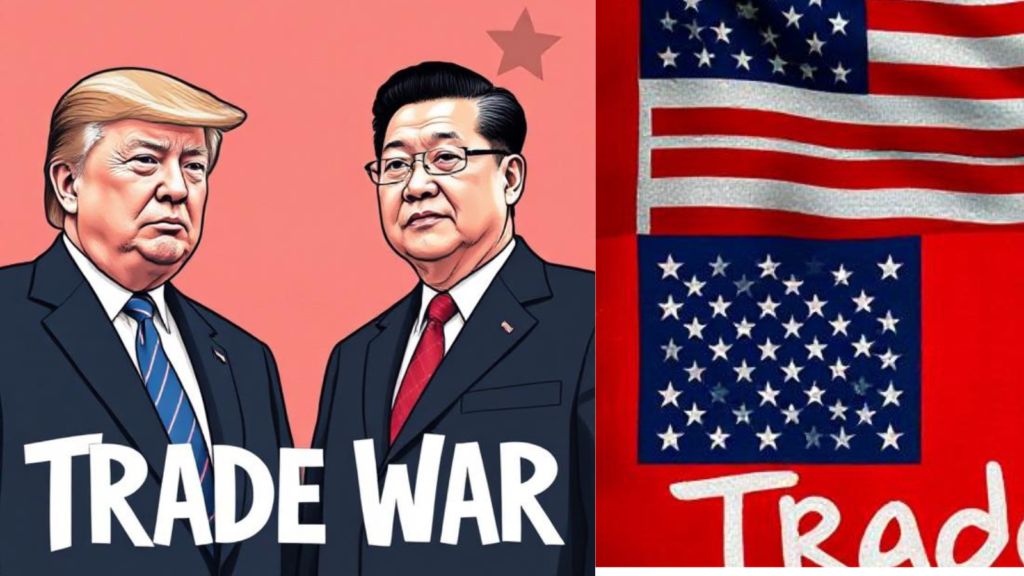The Trump administration’s 2018 China tariffs—slapping duties on $370+ billion in imports—sparked a global trade war with lasting economic consequences. Six years later, Trump’s China tariffs continue fueling heated debates about their economic impact and political consequences The latest development? **Trade policy expert Shelby Bessent opposes removing Trump’s China tariffs, maintaining these import duties serve as crucial leverage in ongoing U.S.-China trade talks. With rising inflation and growing bipartisan concerns, many question whether maintaining these China tariffs benefits or hurts the U.S. economy.
This post unpacks the latest updates, dives into the data, and offers fresh insights you won’t find in generic coverage. Let’s get into it.

Why the Trump China Tariffs Still Matter in 2024
The Trump-era tariffs weren’t just a trade policy—they were a geopolitical statement. By targeting China’s alleged intellectual property theft and unfair subsidies, the U.S. aimed to reset a lopsided relationship. But six years later, the outcomes are murkier than ever.
Key Stats at a Glance
| Metric | Pre-Tariffs (2017) | Post-Tariffs (2023) |
|---|---|---|
| U.S.-China Trade Deficit | $375 billion | $382 billion |
| Average Tariff Rate | 3.1% | 19.3% |
| U.S. U.S. Manufacturing Employment | 12.5M (2017) | 12.9M (2023) |
Source: U.S. Census Bureau, Peterson Institute for International Economics
Despite tariffs, the trade deficit with China barely budged, and manufacturing gains were modest. Yet, as Bessent emphasized in a recent Council on Foreign Relations panel, “The tariffs forced China to the table. Walking away now would erase our leverage.”
The Bessent Perspective: Why Unilateral Cuts Are Off the Table
Shelby Bessent, a former Trump trade official and current advisor to conservative think tanks, argues that lifting tariffs without reciprocal concessions would signal weakness. But critics, including economists from the Brookings Institution, counter that the costs are disproportionately shouldered by U.S. businesses and consumers.
you might also like this topic.
3 Reasons Behind the Stance
- Strategic Trade Leverage: China tariffs remain a key bargaining chip for U.S. negotiators has to pressure China on issues like Taiwan and forced labor.
- Domestic Politics: Tariffs enjoy rare bipartisan support in swing states like Pennsylvania and Ohio, where manufacturing remains symbolic.
- Supply Chain Reshoring: Bessent claims tariffs have accelerated efforts to bring production home—a point contested by MIT researchers, who found reshoring gains were minimal.
The Hidden Costs: How Tariffs Hit Main Street
While policymakers debate grand strategy, the tariffs’ real-world impact is felt by everyday Americans. Missouri small business owner Sarah Johnson’s experience highlights the real-world impact
“Prior to the China tariffs, 80% of our components came directly from Chinese suppliers. Now, my costs are up 25%, and I’ve had to lay off two employees. The ‘Made in America’ alternative? It doesn’t exist for niche components.”
Industries Most Affected
- Electronics: iPhones, laptops, and semiconductors face higher production costs.
- Agriculture: Soybean farmers lost $14 billion in exports to China in 2018 alone (USDA Report).
- Automotive: A typical car’s price rose $700 due to steel/aluminum tariffs (CAR Study).
Biden’s Trade Policy: Holding the Line on Trump China Tariffs
The Biden administration has largely kept Trump’s tariffs intact, opting for a “review” rather than repeal. Behind closed doors, divisions over Trump’s China tariffs are intensifying—here’s why
- Treasury Secretary Janet Yellen has called some tariffs “strategically pointless.”
- **U.S. U.S. Trade Representative Katherine Tai maintains these China tariffs remain an essential bargaining chip in trade negotiations
This internal divide mirrors public opinion. A 2023 Pew Research poll found 55% of Americans believe tariffs hurt the economy, but 62% support them as a response to China’s policies.
What’s Next? 3 Scenarios for the Tariffs
- Status Quo: Tariffs stay until China complies with Phase One deal terms (spoiler: they’ve met only 60% of targets (Chad Bown Analysis)).
- Targeted Cuts: Biden reduces tariffs on consumer goods to curb inflation before the 2024 election.
- Escalation: A Trump 2.0 administration imposes broader tariffs, potentially up to 60% on all Chinese imports.
Your Voice Matters: What Do You Think?
Do Trump’s China tariffs still work, or is it time for a new approach? Share your thoughts in the comments—we’ll feature the most compelling perspectives in our next newsletter.
For deeper dives, explore our related posts:
- How the U.S.-China Tech War is Reshaping Global Markets
- Biden vs. Trump: Comparing Trade Policies Side-by-Side
Visual: Tariff Timeline Infographic
(Include a timeline showing key dates: 2018 tariff announcements, Phase One deal, Biden’s 2022 review, Bessent’s 2023 statement.)
Final Take: The Tariff Tightrope
The Trump China tariffs are more than a policy—they’re a symbol of America’s struggle to balance economic pragmatism with geopolitical ambition. As Bessent’s resistance to unilateral cuts shows, this debate is far from over. Whether you’re a small business owner, policymaker, or voter, one thing is clear: the tariffs’ legacy will shape U.S. trade for decades.
Stay informed. Stay engaged. And don’t forget to subscribe for real-time updates.
CTA:
“Want more insights on global trade? Subscribe to our newsletter for exclusive analysis, or download our free guide, ‘Navigating the New Trade War Era.’”




